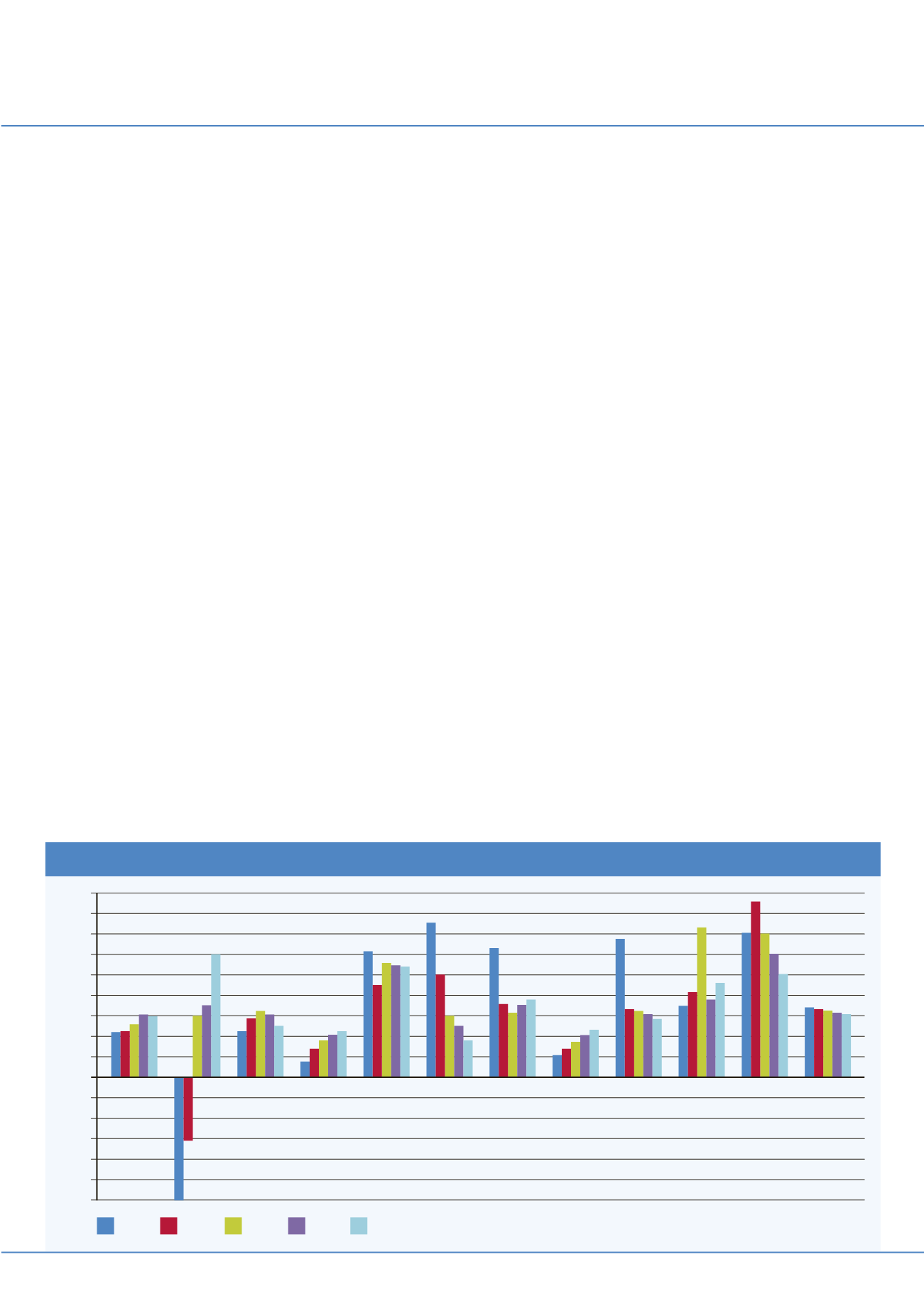
>
27
july-august 2013
international
construction
ECONOMIC OUTLOOK
Strong momentum
Strong momentum
The need for new transport networks to close the huge infrastructure gap Southern Africa is driving
investment in the region’s construction markets.
Scott Hazelton
reports.
E
conomic growth in sub-Saharan Africa
should average at least +5% this year and
in 2014 – the best performance since the
global downturn began in 2008, and second only
to Asia for the best regional growth in the world.
South Africa, due to its strong trade links to the
Eurozone, is an outlier in the region’s high growth
momentum, but in total 11 of the world’s fastest
growing economies during the next five years
will be African, according to the International
Monetary Fund (IMF).
Investors are responding to the opportunity with
strong inflows to the continent, especially south of
the Sahara, while the African Development Bank
(AfDB) is readying an ambitious infrastructure
bond program to boost African economies.
The proposed programme aims to raise up to
US$ 40 billion for infrastructure development,
with about half of the amount to be drawn from
the considerable reserves now held by central
banks around the continent.
If it works as expected, the programme will
make AfDB Africa’s largest multilateral financier.
To put it in perspective, the projected US$ 40
billion would compare to the US$ 19 billion
dispersed this year through the AfDB and World
Bank combined.
Assuming that the projects financed are well
chosen and executed capably and honestly, the
continent would receive a tremendous direct and
indirect economic boost, but it would still only
partially close the region’s huge infrastructure gap.
Indeed, Africa may need to invest over
US$ 50 billion in the next decade on additional
rail infrastructure alone. This would provide
4,000 km of rail to improve access to the
continent’s mineral resources.
While there are extensive coal, iron and
manganese deposits in West Africa and
Mozambique, they are expensive to reach and
develop due to lack of infrastructure. Mozambique
alone could see upwards of US$ 20 billion in rail
and port infrastructure as its coal reserves are
desired by the large and rapidly growing nearby
markets in Asia, especially India.
Roads are also an issue. Mozambique has
about 30,000 km of road, with the main arteries
surfaced. However, secondary roads tend to be
poorly maintained and can become impassable
in the rainy season. With Chinese funding, the
country has begun an infrastructure improvement
programme that will include the construction
of a ring road to connect critical highways in
Mozambique to South Africa by 2014/15.
Investment in roads is widespread and vitally
needed. Under its Vision 2030 programme,
Kenya has committing to building and upgrading
thousands of kilometres of roads. The initial
phase will see construction of the country’s first
eight-lane superhighway, a major link to the
great Trans-African highway from Cape Town to
Cairo and connecting Nairobi with Somalia and
Ethiopia.
Power shortages
Another critical infrastructure element is
power, with most countries throughout Africa
experiencing chronic shortages that disrupt
industrial and commercial operations. Plans are
being put in place to tackle this – Nigeria, for
instance, intends to put 1 GW into the national
electricity grid per year over the next decade,
increasing total capacity by 10 GW, or about a
+50% to +70% compared to the current reliable,
as opposed to nominal, level of capacity.
While few details have been released, the plan
is notable for two aspects. First, the focus will be
largely on renewable sources, principally solar.
Secondly, the investment is being made by a
South Korean conglomerate, HQMC, pledging
up to US$ 30 billion.
The HQMC venture is structured as a build-
operate-transfer contract, which would provide
Nigerians with both jobs and technical training
in early project phases, and eventually turn over
full ownership and control of the technology to
Nigerians.
Growth in business fixed investment
Sub-
Saharan
Africa
South
Africa
Senegal
Nigeria
Namibia
Kenya
Guinea
Ghana
Republic
of Congo
Botswana
Angola
2011
2012
2013
2014
2015
18%
16%
14%
12%
10%
8%
6%
4%
2%
0%
-2%
-4%
-6%
-8%
-10%
-12%
Zimbabwe


